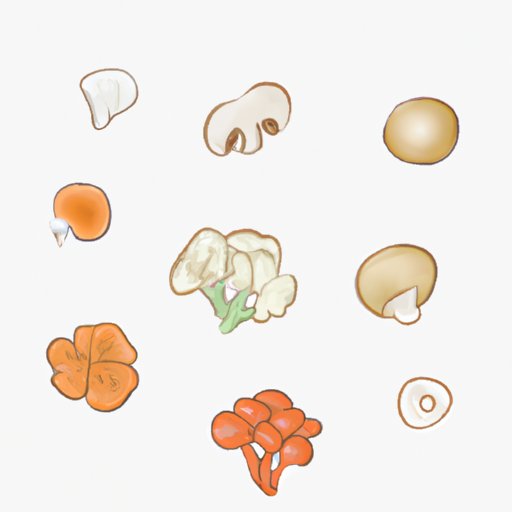
Introduction
Are you a foodie who loves to draw? Or an artist who is interested in adding food elements into your work? Whatever the reason, being able to draw food is a valuable skill to have. Not only can it be a fun and rewarding hobby, but it can also be helpful in various fields, such as food blogging, advertising, and more.
In this article, we will provide you with a step-by-step guide on how to draw different types of food. We will also cover different techniques and styles, as well as common mistakes to avoid and resources to use.
Step-by-step tutorials
Drawing food can be broken down into simple steps, making it easy for beginners to learn. Start by drawing rough shapes and outlines, and then gradually add details.
When drawing fruits, start by sketching the basic shape of the fruit, such as a round circle for an apple or an oval for a pear. Then, add details such as the stem, the texture on the skin, and any shadows or highlights.
For vegetables, follow a similar process by sketching the basic shape of the vegetable, such as a cylindrical shape for a carrot or a round shape for a tomato. Then add details such as the texture of the skin or leaves.
When drawing desserts, such as cakes or pastries, start by drawing the basic shape of the dessert, such as a layered cake shape or a rounded muffin shape. Then add any details such as frosting, sprinkles, or fruit toppings.
Highlighting different techniques
Artist often use techniques such as shading, cross-hatching, and blending to create realistic textures and effects in their drawings. For example, using cross-hatching can create a shadow effect that adds dimension to the drawing.
Another useful technique to use is stippling, in which small dots are used to create texture, such as the texture of a strawberry or a kiwi.
Showcasing different styles
Different drawing styles can help communicate different moods or messages in your food illustrations. A realistic style can capture the details and textures of the food, while a cartoonish style can add humor and playfulness.
Other styles can also be applied to food, such as using watercolors for a soft and colorful effect or using ink for a bold and graphic look.
Providing inspiration
If you ever feel stuck or need inspiration, just look for some amazing food-related illustrations. Instagram, Pinterest, and other social media platforms are filled with talented artists who create beautiful and unique food illustrations.
You can also find inspiration in real-life by taking a walk around your local farmers’ market or food fair. Take some photos or sketches of the different food items to use as a reference for your illustrations.
Focusing on common mistakes
Some common mistakes when drawing food include not paying enough attention to the proportions of the different elements, such as the size of the stem or the placement of the leaves. Another common mistake is not using proper shading to create depth and dimension.
To avoid these mistakes, take your time and focus on the details. Use proper tools, such as a good set of pencils, and make sure to practice regularly.
Incorporating drawing exercises
Throughout this article, we have provided mini drawing exercises to help you practice what you are learning. You can also practice by drawing some of your favorite fruits, vegetables, or desserts from memory or from real-life references.
Don’t be afraid to experiment with different techniques and styles to find your own unique drawing style.
Highlighting resources/tools
There are many resources and tools that can help make your food drawings even better. Some popular tools include pencils with different lead types to create different textures and colored pencils to add some pop of color to your illustrations.
You can also find online tutorials and apps to help you improve your drawing skills. Some popular apps include Procreate and Sketchbook Pro.
Conclusion
By following this step-by-step guide and practicing regularly, anyone can learn to draw food. Whether you are a food blogger, an artist, or just someone who enjoys creating art, drawing food can be a fun and rewarding skill to have.
Remember to take your time, focus on the details, and experiment with different techniques and styles. Share your drawings with others and seek inspiration from different sources.





